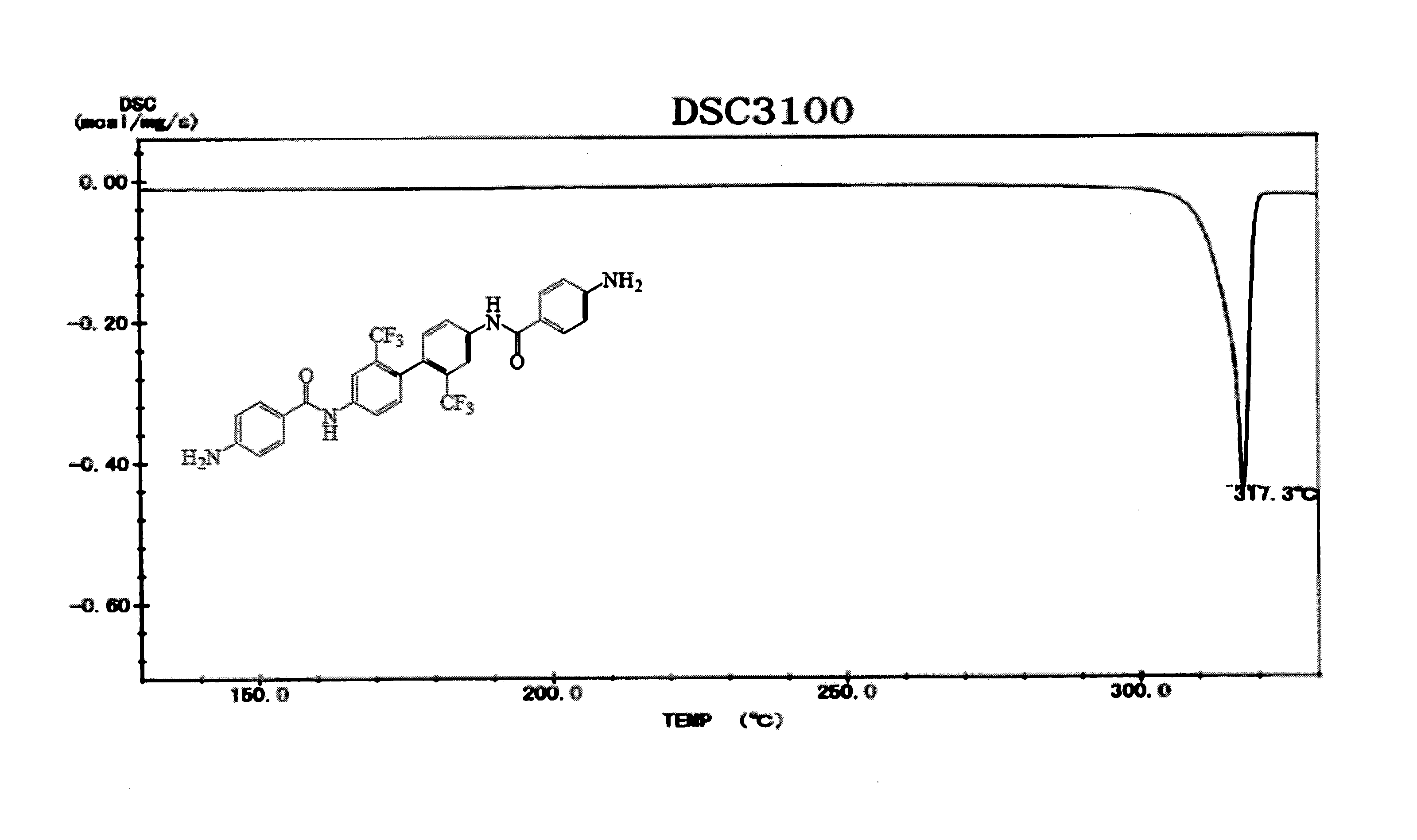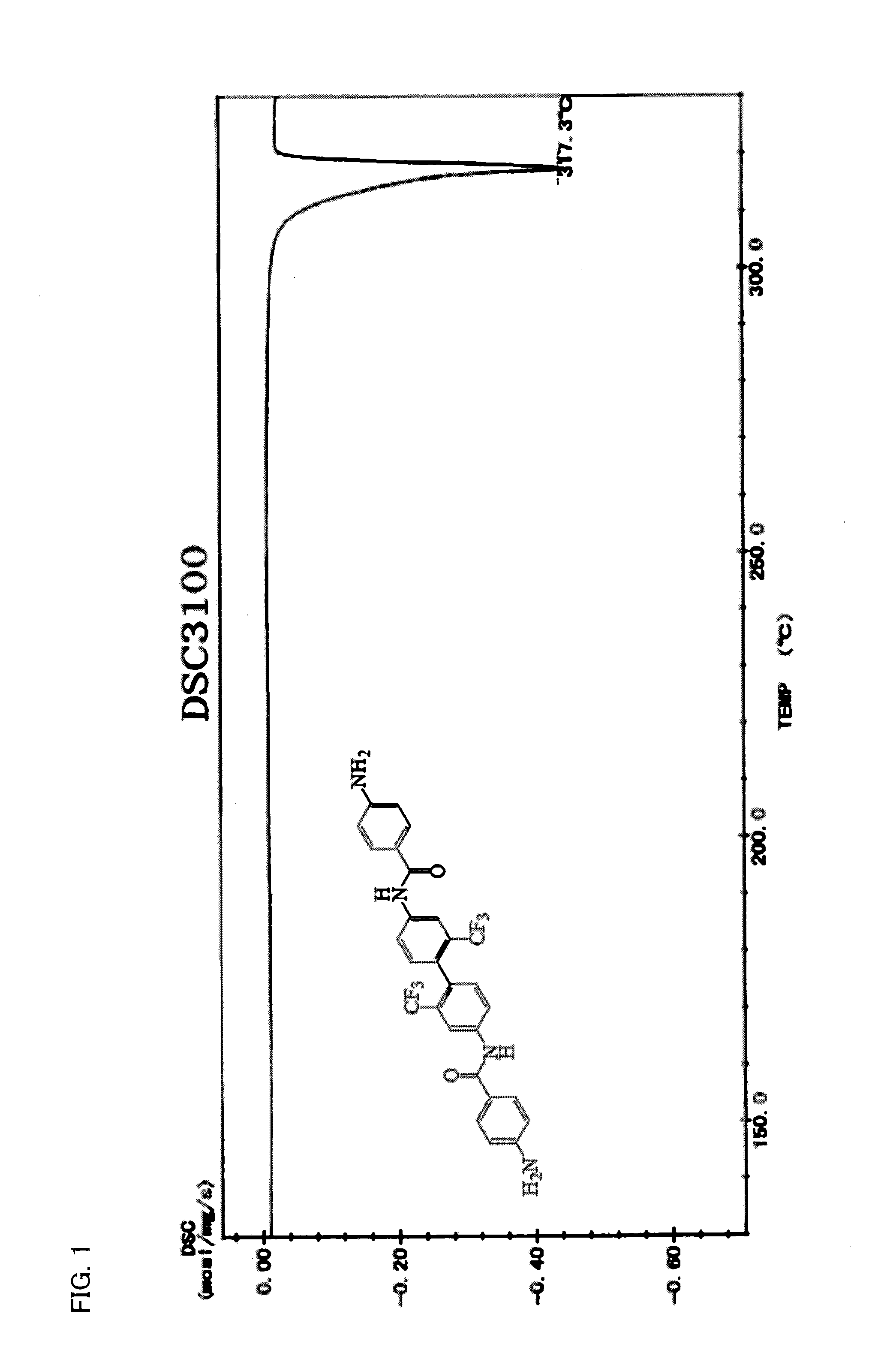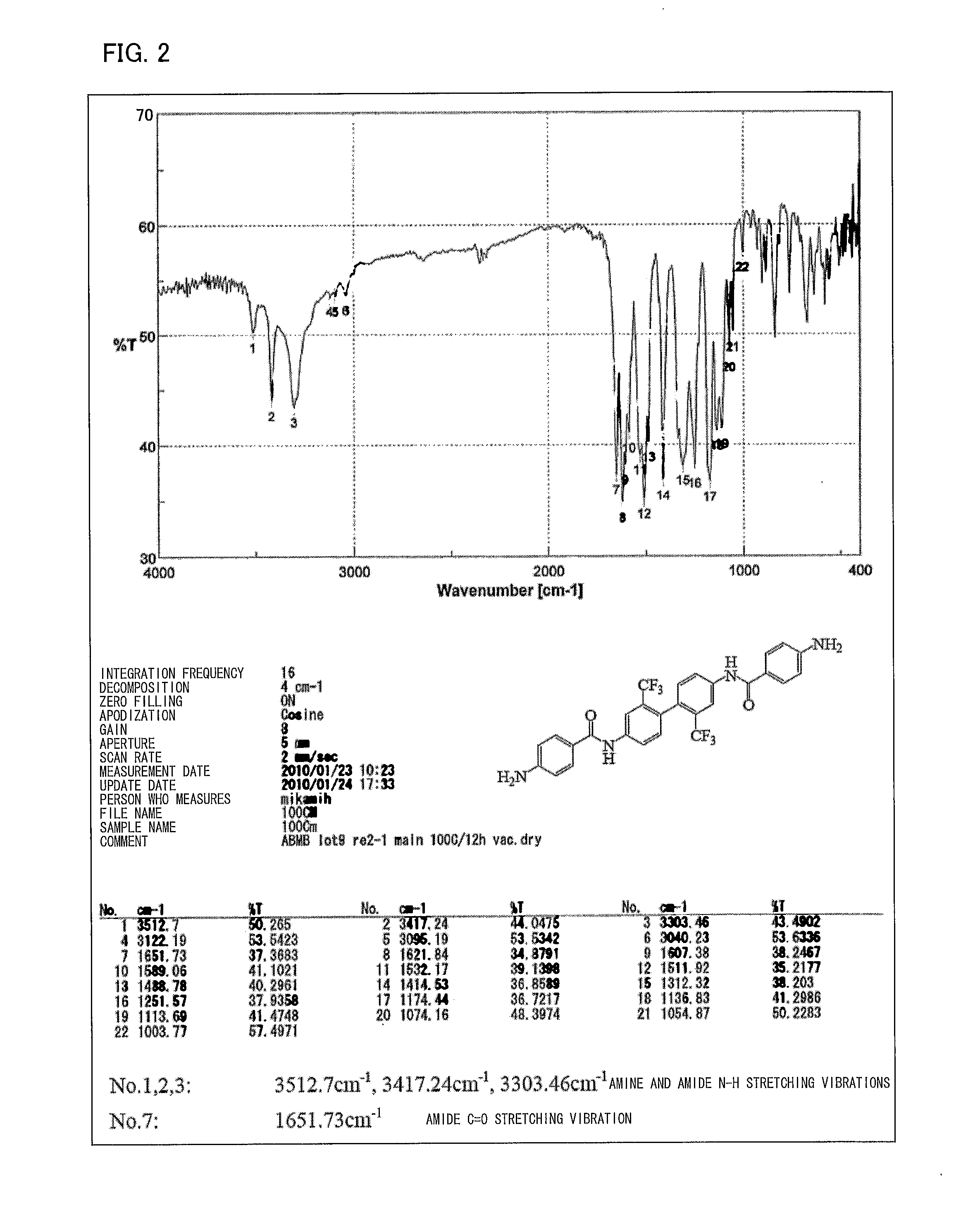Diamine, polyimide, and polyimide film and utilization thereof
- Summary
- Abstract
- Description
- Claims
- Application Information
AI Technical Summary
Benefits of technology
Problems solved by technology
Method used
Image
Examples
example 1
Synthesis of Diamine
[0120]The diamine (hereinafter referred to as “ABMB”) represented by formula (8) was synthesized by use of the method represented by formula (13). How to synthesize the diamine will be described in detail below.
[0121]
[0122]First, 3.2023 g (10 mmol) of 2,2′-bis(trifluoromethyl)benzidine (TFMB), 1.75 mL of THF, and 3.3 mL (40 mmol) of a pyridine solution were added, by use of a syringe, to a liquid solution in an ice bath in which liquid solution 3.8023 g (20.5 mmol) of 4-nitrobenzene carboxylic acid chloride (4-NBC) was dissolved in 6.26 mL of tetrahydrofuran (hereinafter referred to as “THF”). This generated a large amount of yellowish-white precipitate. The large amount of yellowish-white precipitate was left for 12 hours, filtered, and sufficiently washed with THF and then ion exchange water. Obtained powder was dried at 100° C. for 12 hours under reduced pressure. Consequently, 5.9216 g of a nitro compound (hereinafter referred to as “NBMB”, yield: 95.7%) that...
example 2
[0129]First, 1.6754 g (3 mmol) of ABMB was dissolved in 5.4784 g of NMP. To an obtained liquid solution was added 0.6725 g (3 mmol) of H′-PMDA. The liquid solution was stirred for 7 hours at room temperature, and then diluted with NMP so that a diluted solution had a solid content concentration of 10.2 wt %. Subsequently, a mixed solvent of 3.0627 g (30 mmol) of acetic anhydride and 1.1865 g (15 mmol) of pyridine was slowly dropped into the diluted solution at room temperature. An obtained mixed solution of the mixed solvent and the diluted solution was stirred for 24 hours. A large amount of methanol was added to the mixed solution. This generated target white precipitate. The white precipitate was sufficiently washed with methanol, and then dried in vacuum.
[0130]Obtained polyimide powder was dissolved in cyclopentanone so that a 3 wt % liquid solution was prepared. The liquid solution was spread over a glass substrate, and dried at 60° C. for two hours by use of a hot-air drier. T...
example 3
[0132]Example 3 was identical to Example 2 except that, in Example 3, a film production condition was changed as below. Obtained polyimide powder was dissolved in cyclopentanone so that a 3 wt % liquid solution was prepared. The liquid solution was spread over a glass substrate, dried at 60° C. for two hours by use of a hot-air drier, further dried in vacuum at 250° C. for 1 hour on the glass substrate, separated from the glass substrate, and then further thermally processed in vacuum at 250° C. for 1 hour. Consequently, a film was produced. Specifically, two kinds of film, i.e., a first film whose thickness was 10 μm and a second film whose thickness was 15 μm were produced. The first film was used to measure an average linear thermal expansion coefficient and a mechanical characteristic of the first film. The second film was used to measure a refractive index of the second film.
[0133]The mechanical characteristic of the first film was measured. It was found that the first film had...
PUM
| Property | Measurement | Unit |
|---|---|---|
| Transparency | aaaaa | aaaaa |
| Thermal resistance | aaaaa | aaaaa |
| Thermal expansion coefficient | aaaaa | aaaaa |
Abstract
Description
Claims
Application Information
 Login to View More
Login to View More - R&D
- Intellectual Property
- Life Sciences
- Materials
- Tech Scout
- Unparalleled Data Quality
- Higher Quality Content
- 60% Fewer Hallucinations
Browse by: Latest US Patents, China's latest patents, Technical Efficacy Thesaurus, Application Domain, Technology Topic, Popular Technical Reports.
© 2025 PatSnap. All rights reserved.Legal|Privacy policy|Modern Slavery Act Transparency Statement|Sitemap|About US| Contact US: help@patsnap.com



